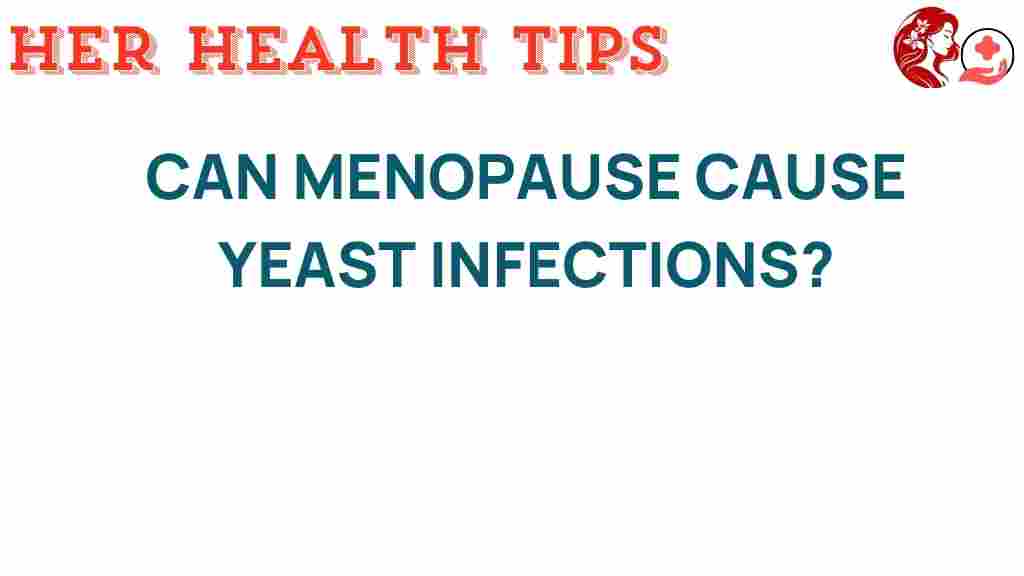Unraveling the Link Between Menopause and Yeast Infections
Menopause is a natural phase in a woman’s life that marks the end of her reproductive years. However, this transition can bring various changes to a woman’s health, particularly affecting her vaginal health. One common issue that many women face during menopause is the occurrence of yeast infections. Understanding the connection between menopause and yeast infections is crucial for maintaining women’s health during this transitional period.
The Impact of Hormonal Changes on Vaginal Flora
As women approach menopause, their bodies undergo significant hormonal changes, notably a decrease in estrogen levels. Estrogen plays a vital role in maintaining the vaginal flora— the community of microorganisms that inhabit the vagina. A healthy balance of bacteria, primarily Lactobacillus, helps to keep the vaginal environment slightly acidic, which is essential for preventing the overgrowth of yeast, particularly Candida albicans.
When estrogen levels drop during menopause, the vaginal flora can be disrupted, leading to:
- Reduced levels of Lactobacillus
- Increased vaginal pH
- Altered moisture levels in the vaginal area
These changes can create an environment conducive to the overgrowth of yeast, resulting in yeast infections.
Symptoms of Yeast Infections
Recognizing the symptoms of yeast infections is essential for timely treatment. Common symptoms include:
- Itching or irritation in the vaginal area
- Thick, white vaginal discharge resembling cottage cheese
- Redness and swelling of the vulva
- Burning sensation during urination or intercourse
If you experience these symptoms during menopause, it’s crucial to consult a healthcare professional for proper diagnosis and treatment.
Treatment Options for Yeast Infections
When it comes to treating yeast infections, several options are available:
- Over-the-counter antifungal medications: These are usually available as creams, ointments, or oral tablets.
- Prescription antifungal medications: For recurrent infections, your doctor may prescribe stronger medication.
- Probiotics: Introducing probiotics can help restore the natural vaginal flora.
It’s important to follow treatment guidelines and consult with a healthcare provider before starting any medication.
Preventing Yeast Infections During Menopause
Preventing yeast infections is often more effective than treating them. Here are some strategies to promote vaginal health and reduce the risk of infections:
- Maintain good hygiene: Gently clean the vaginal area with mild soap and water.
- Wear breathable underwear: Cotton underwear helps keep the area dry and reduces moisture buildup.
- Avoid irritants: Stay away from douches, scented soaps, and other potential irritants.
- Monitor your diet: A diet low in sugar can help prevent the overgrowth of yeast.
- Consider hormone therapy: For some women, hormone replacement therapy (HRT) can help alleviate menopausal symptoms and support vaginal health.
Understanding the Role of Estrogen
Estrogen is not just a hormone that regulates the menstrual cycle; it is crucial for maintaining the health of the vaginal mucosa. As estrogen levels decline during menopause, women may experience:
- Vaginal dryness
- Thinning of vaginal tissues
- Decreased lubrication during sexual activity
These changes can contribute to a higher risk of yeast infections and other vaginal issues. Women should discuss with their healthcare provider whether estrogen therapy is appropriate for them.
Health Awareness and Seeking Help
Health awareness is vital for women going through menopause. Recognizing the signs and symptoms of yeast infections and understanding their link to menopause can empower women to take charge of their health. If you suspect you have a yeast infection or experience other troubling symptoms, don’t hesitate to reach out to a healthcare professional.
Many women suffer in silence, thinking that yeast infections are just a part of aging. However, acknowledging these changes and seeking help can lead to effective treatments and improved quality of life.
Troubleshooting Common Concerns
Here are some common concerns and troubleshooting tips regarding yeast infections during menopause:
- Concern: Frequent yeast infections.
Tip: If you experience recurrent infections, assess your lifestyle and diet and consult your healthcare provider for possible underlying conditions or treatment options. - Concern: Symptoms not improving with over-the-counter treatments.
Tip: If symptoms persist after using OTC medications, seek medical advice for a proper diagnosis and prescription treatment. - Concern: Uncertainty about symptoms.
Tip: Keep a record of your symptoms and discuss them with your healthcare provider to rule out other conditions.
Conclusion
The link between menopause and yeast infections is significant and driven by hormonal changes that affect women’s health. Understanding how these hormonal fluctuations impact vaginal flora can help women navigate this challenging phase of life more effectively. By maintaining awareness of symptoms, exploring treatment options, and implementing preventive measures, women can manage their health and reduce the likelihood of yeast infections during menopause.
For more detailed information on women’s health, consider visiting this resource. Remember, staying informed and proactive about your health is the best way to ensure well-being during menopause.
This article is in the category Reproductive and created by HerHealthTips Team
